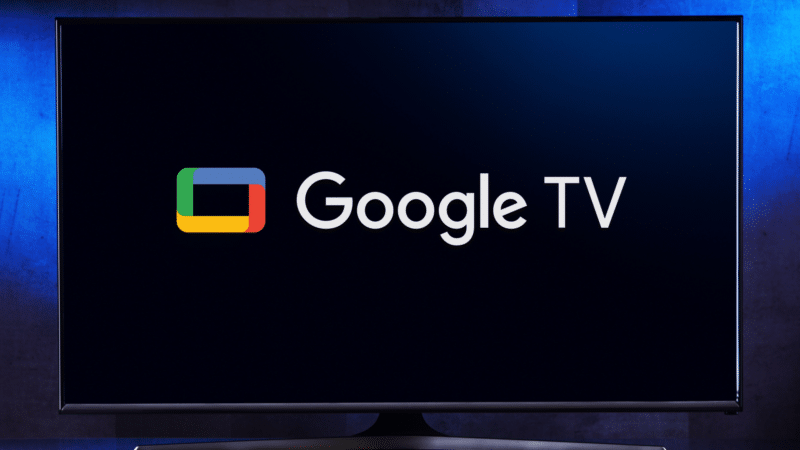
Remember when ChatGPT launched and everyone predicted Google’s search empire would crumble? Yeah, about that. Here’s the reality check nobody saw coming. A massive new report from Datos, a Semrush company, just analyzed billions of desktop searches from millions of users across the US and Europe. The data reveals an unexpected AI search evolution: Google isn’t just surviving the revolution, it’s absolutely crushing it with a 95% market share in both regions.
And as for all those headlines about OpenAI killing Google with ChatGPT’s search features? Turns out they were way off base.
AI Was Supposed to Win. It Didn’t.
Don’t get me wrong. ChatGPT and its AI buddies have definitely made an impact. Usage has nearly tripled over the past year. More than 30% of US desktop users and over 40% of Europeans are now using ChatGPT. Tools like Gemini, Claude, and Perplexity have their loyal fans too.
On the surface, it sounds like Google might have just lost 30-40% of its users to AI. But here are some numbers to put it into perspective: AI tools only make up about 1.3% of total browsing activity.
Despite every tech pundit on Twitter declaring that AI would replace Google, it barely makes a dent in how people actually search for stuff online. AI isn’t replacing traditional search at all. It’s just another tool in your digital toolbox. You might ask ChatGPT to help you debug some code or brainstorm ideas. Then you’ll hop over to Google’s AI Mode to find that new Thai restaurant or check if your favorite shoes are on sale.
The Zero-Click Problem Nobody’s Talking About
Okay, so Google’s not dead. However, it does have one major issue that publishers are grappling with. Zero-click searches.
Almost 27% of Google searches now end without anyone clicking anything. This is up from 24.4% just a year ago. People are getting their answers right there on the search results page and calling it a day.
For anyone running a website or trying to drive traffic, this is kind of scary. You’ve done all your SEO homework, you put in the effort into crafting the best articles. All this just so you could rank number one on Google. But then you still get zero visitors because Google just answered the question itself. And the worst part is that these answers might have been scraped from your own website.
Google’s AI Overviews feature is a big part of this. These AI-generated summaries now show up in over 13% of searches, and that number keeps climbing. Some estimates say they could appear in more than 80% of informational searches soon.
In August, Google straight up denied that AI search was hurting website traffic. Publishers weren’t buying it. Multiple reports showed traffic tanking, especially for news sites, but Google said everything was fine.
Reddit Is the Real Disruptor
But if you really want to know what’s actually shaking up the search game, it’s not some fancy AI tool. It’s an oldie but goodie: Reddit.
The community-driven platform has absolutely exploded in popularity. It’s overtaken Facebook in desktop visits in the US and is catching up fast in Europe. Reddit now sits comfortably in the top five destinations people reach from search engines, right alongside YouTube, Amazon, Wikipedia, and Facebook.
This is because people are tired of reading polished, SEO-optimized garbage that tells them nothing useful. When you Google “best budget laptop Reddit,” you’re saying loud and clear that you want real opinions from real people, not some affiliate marketing nonsense. Reddit got so valuable that Google paid them $60 million for access to their data to train AI models.
This is actually a fascinating turnaround. In the past, websites strived to provide readers with neutral commentary and let them make the decisions themselves. But now? We’re missing the human touch so much that sometimes diving deep into an echo chamber like Reddit might yield more interesting (and controversial) opinions and perspectives that traditional websites might not have.
AI Can’t Kill What It Can’t Replace
While AI is stealing traffic from some sites, it’s completely failing to disrupt others.
YouTube remains untouchable. It’s the top destination from traditional search in both the US and Europe. It’s also the second-most visited site from AI tools.
But why can’t AI touch video content? Because watching someone actually do something is way more valuable than reading about it. You can’t replace a 10-minute tutorial on fixing your sink with a text summary. Try learning a new dance move from ChatGPT. Good luck with that.
This reveals something important about what AI is actually disrupting. Sites offering basic, factual, “evergreen” content are getting hammered. Wikipedia, for example, lost 5% of its human traffic year over year while bots and scrapers grew massively. Stack Overflow, Chegg, and similar Q&A sites are bleeding traffic.
But platforms offering fresh perspectives, community discussions, and video content? They’re actually thriving. YouTube’s citation rate in AI answers jumped from 37% to 54%. Reddit gets mentioned by ChatGPT as often as it gets cited. These platforms offer something AI can’t replicate: real human experiences and visual demonstrations.
The New Rules for Surviving AI Search
So, what does this mean for anyone trying to drive traffic or build an audience? It’s time to toss out the old playbook and start writing a new one. Creating generic “what is” articles and “how to” guides used to be a solid strategy. Now? AI just scrapes that content, summarizes it, and nobody ever visits your site.
Some publishers are already shifting their strategy. Instead of cranking out evergreen content that AI can easily replicate, they’re focusing on what AI can’t steal: original research, unique data, customer stories, and fresh perspectives that haven’t been said a million times before.
Think about it this way: ChatGPT can tell you what SEO is. But at the same time, it can’t tell you about the weird bug you just discovered in Google Search Console this morning. AI can explain Reddit. But can it spill the tea unfolding in your favorite subreddit right now?
From what we’ve gathered, the content that survives is either too specific for AI to care about, too fresh for AI to have learned yet, or too personality-driven for AI to replicate. As for everything else? Well, you might think of it like roadkill on the information superhighway.
We’ve Seen This Panic Before
The fear and resistance around AI search evolution isn’t new. We’ve watched this exact movie play out before.
There are strong parallels between how traditional artists reacted to the rise of digital art and how some content creators today feel about AI-generated content. When digital art first emerged, many traditional artists felt threatened, dismissed it as “cheating,” or questioned its legitimacy as “real art” because it offered new tools and shortcuts that made certain aspects of creation easier or faster.
Now, doesn’t that sound familiar?
Early reactions to digital art in the 2000s mirror today’s AI anxiety perfectly. Traditional artists viewed digital tools with skepticism, often calling it “not real art” because it lacked the physicality and manual skill associated with traditional mediums. Some artists felt that digital tools made art creation too easy, reducing the perceived value of the artist’s effort and skill. There was intimidation, as digital art allowed for rapid production and easy corrections, which contrasted with the more labor-intensive and irreversible nature of traditional art.
Just as digital art was once seen as a threat to traditional art, AI-powered search tools are now viewed by some as a threat to traditional websites and publishers. Both faced backlash for being labeled as “cheating” or “not legitimate,” often due to misunderstandings about the creative process and the skills required.
Over time, digital art gained acceptance as artists and audiences recognized that it required its own unique set of skills and creative decisions, much like traditional art. A similar evolution is happening with AI search right now. The tools aren’t replacing the craft. Instead, they’re expanding what’s possible.
So What’s the Verdict?
Google’s 95% market share isn’t going anywhere. ChatGPT’s search tools didn’t kill traditional search. They just gave us another option.
The real story of this AI search evolution isn’t about AI destroying Google. It’s about how we’re all learning to use multiple tools for different jobs. You’ve got Google for quick facts and finding stuff. You can also use ChatGPT for brainstorming and complex questions. Then, you can always hop on Reddit for real opinions, and finally, YouTube for how-tos.
Some things obviously need to be addressed. Zero-click searches are forcing websites to completely rethink their strategy. Generic content is dead, and community platforms and video are winning.
As for the AI revolution everyone predicted, it feels more like a gentle evolution in search. The reality is less dramatic than the headlines suggested, but way more interesting when you look at how people actually use the internet now.
So, maybe the future of search isn’t about one platform winning. It’s about all of them carving out their own space. Now, it’s up to content creators learning which types of content are worth making in an AI-powered world.
The post Everyone Predicted Google's Death in 2024, Google Hit 95% Market Share Instead appeared first on Android Headlines.


 AI is creating new opportunities for Oklahomans to learn, grow and succeed. Google is committed to making sure the Sooner State is not just ready for this transformation…
AI is creating new opportunities for Oklahomans to learn, grow and succeed. Google is committed to making sure the Sooner State is not just ready for this transformation… 





















































